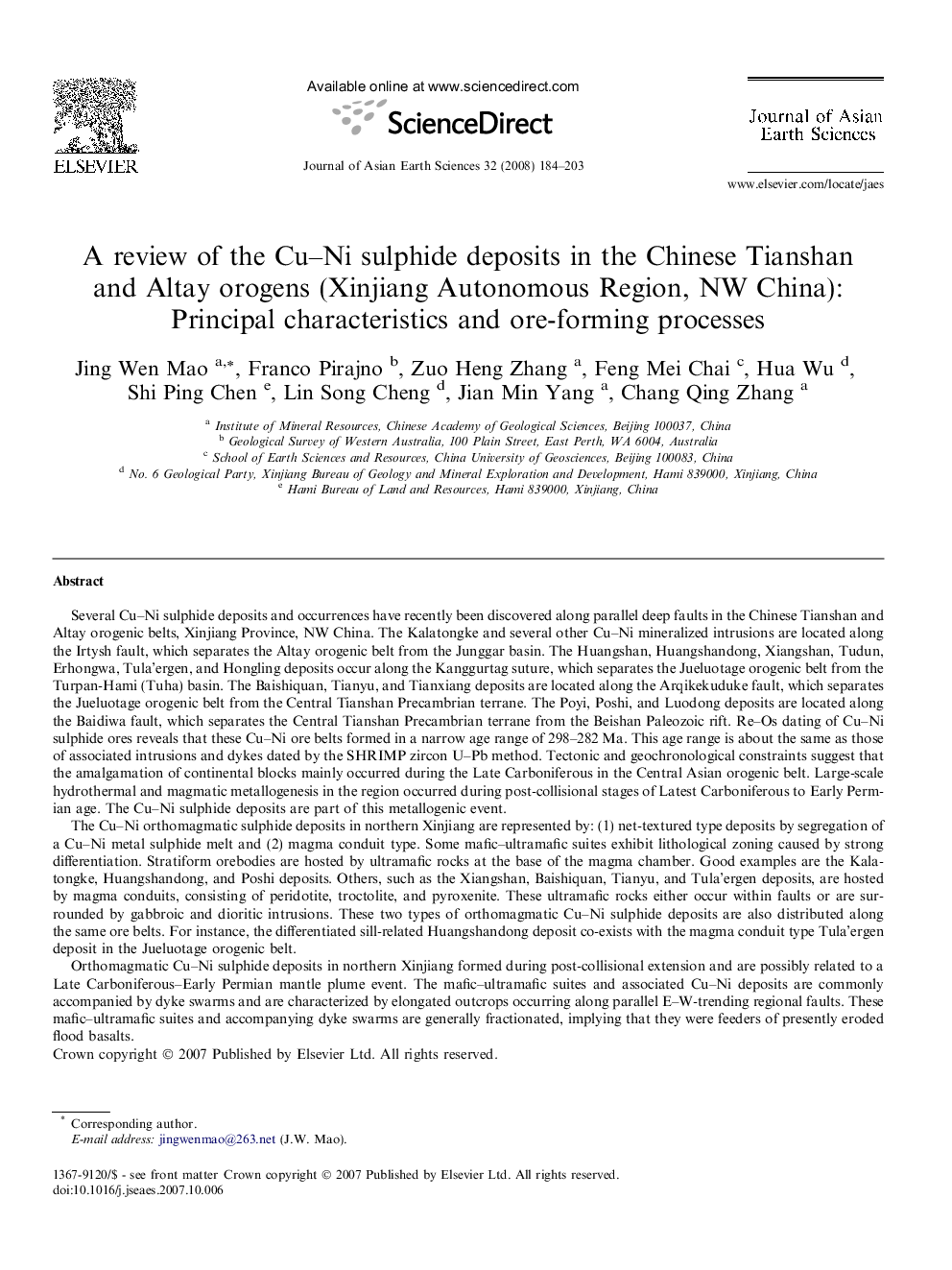| Article ID | Journal | Published Year | Pages | File Type |
|---|---|---|---|---|
| 4732357 | Journal of Asian Earth Sciences | 2008 | 20 Pages |
Several Cu–Ni sulphide deposits and occurrences have recently been discovered along parallel deep faults in the Chinese Tianshan and Altay orogenic belts, Xinjiang Province, NW China. The Kalatongke and several other Cu–Ni mineralized intrusions are located along the Irtysh fault, which separates the Altay orogenic belt from the Junggar basin. The Huangshan, Huangshandong, Xiangshan, Tudun, Erhongwa, Tula’ergen, and Hongling deposits occur along the Kanggurtag suture, which separates the Jueluotage orogenic belt from the Turpan-Hami (Tuha) basin. The Baishiquan, Tianyu, and Tianxiang deposits are located along the Arqikekuduke fault, which separates the Jueluotage orogenic belt from the Central Tianshan Precambrian terrane. The Poyi, Poshi, and Luodong deposits are located along the Baidiwa fault, which separates the Central Tianshan Precambrian terrane from the Beishan Paleozoic rift. Re–Os dating of Cu–Ni sulphide ores reveals that these Cu–Ni ore belts formed in a narrow age range of 298–282 Ma. This age range is about the same as those of associated intrusions and dykes dated by the SHRIMP zircon U–Pb method. Tectonic and geochronological constraints suggest that the amalgamation of continental blocks mainly occurred during the Late Carboniferous in the Central Asian orogenic belt. Large-scale hydrothermal and magmatic metallogenesis in the region occurred during post-collisional stages of Latest Carboniferous to Early Permian age. The Cu–Ni sulphide deposits are part of this metallogenic event.The Cu–Ni orthomagmatic sulphide deposits in northern Xinjiang are represented by: (1) net-textured type deposits by segregation of a Cu–Ni metal sulphide melt and (2) magma conduit type. Some mafic–ultramafic suites exhibit lithological zoning caused by strong differentiation. Stratiform orebodies are hosted by ultramafic rocks at the base of the magma chamber. Good examples are the Kalatongke, Huangshandong, and Poshi deposits. Others, such as the Xiangshan, Baishiquan, Tianyu, and Tula’ergen deposits, are hosted by magma conduits, consisting of peridotite, troctolite, and pyroxenite. These ultramafic rocks either occur within faults or are surrounded by gabbroic and dioritic intrusions. These two types of orthomagmatic Cu–Ni sulphide deposits are also distributed along the same ore belts. For instance, the differentiated sill-related Huangshandong deposit co-exists with the magma conduit type Tula’ergen deposit in the Jueluotage orogenic belt.Orthomagmatic Cu–Ni sulphide deposits in northern Xinjiang formed during post-collisional extension and are possibly related to a Late Carboniferous–Early Permian mantle plume event. The mafic–ultramafic suites and associated Cu–Ni deposits are commonly accompanied by dyke swarms and are characterized by elongated outcrops occurring along parallel E–W-trending regional faults. These mafic–ultramafic suites and accompanying dyke swarms are generally fractionated, implying that they were feeders of presently eroded flood basalts.
